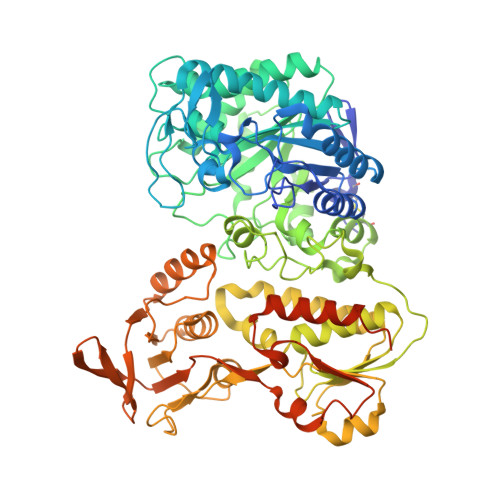Low potential enzymatic hydride transfer via highly cooperative and inversely functionalized flavin cofactors.
Willistein, M., Bechtel, D.F., Muller, C.S., Demmer, U., Heimann, L., Kayastha, K., Schunemann, V., Pierik, A.J., Ullmann, G.M., Ermler, U., Boll, M.(2019) Nat Commun 10: 2074-2074
- PubMed: 31061390
- DOI: https://doi.org/10.1038/s41467-019-10078-3
- Primary Citation of Related Structures:
6QKG, 6QKR, 6QKX - PubMed Abstract:
Hydride transfers play a crucial role in a multitude of biological redox reactions and are mediated by flavin, deazaflavin or nicotinamide adenine dinucleotide cofactors at standard redox potentials ranging from 0 to -340 mV. 2-Naphthoyl-CoA reductase, a key enzyme of oxygen-independent bacterial naphthalene degradation, uses a low-potential one-electron donor for the two-electron dearomatization of its substrate below the redox limit of known biological hydride transfer processes at E°' = -493 mV. Here we demonstrate by X-ray structural analyses, QM/MM computational studies, and multiple spectroscopy/activity based titrations that highly cooperative electron transfer (n = 3) from a low-potential one-electron (FAD) to a two-electron (FMN) transferring flavin cofactor is the key to overcome the resonance stabilized aromatic system by hydride transfer in a highly hydrophobic pocket. The results evidence how the protein environment inversely functionalizes two flavins to switch from low-potential one-electron to hydride transfer at the thermodynamic limit of flavin redox chemistry.
Organizational Affiliation:
Microbiology, Faculty of Biology, University of Freiburg, Schänzlestrasse 1, 79104, Freiburg, Germany.


















